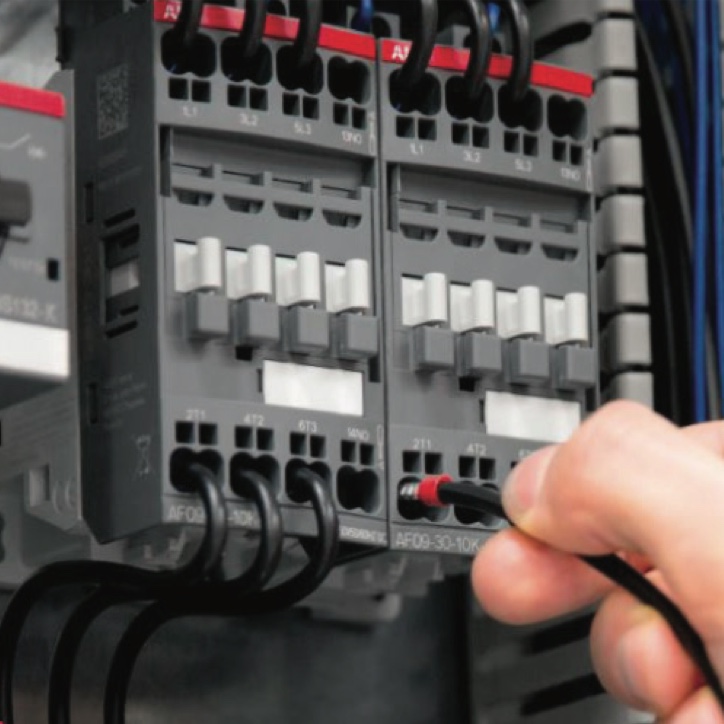Panel building productivity
Chris Lovell
Product Marketing
ABB EPPC North America
The people who build panels spend a considerable amount of their time with screwdrivers in their hands. Push-in connections not only eliminate the need to tighten terminals but also result in more reliable, vibration-proof connections. Read about the benefits of push-in connections and ABB Push-in Spring solutions for motor starters and how they can increase panel building productivity.
Look inside almost any mechanical or electrical device today and you will find a more-modular design approach than in the past. Where there used to be many parts and multiple connections to make, you now typically find a smaller number of modules or units. One of the big reasons for this change is simplicity of installation and repair.
You can find a good example if you take a front wheel off your car or truck. Instead of a loose wheel bearing that needs to be expertly installed and adjusted, you will find a hub unit. It includes the bearing as well as sensors for the brake and engine-control systems combined in a bolt-on, plug-in unit. At the factory and in the service garage, this makes installing and servicing the hub far easier and faster and nearly foolproof.
The same kind of speed and simplicity of assembly is also available to panel makers and users. The traditional process of wiring components like motor starters can now be done via push-in connections. This isn’t a new idea. Push-in connections have been around for years. Why they haven’t been more widely adopted in the US is a bit of a mystery, but interest in this concept is growing, and for good reason.
The biggest benefit is speed of assembly. Making solid-wire or ferrule connections are literally as simple as pushing the wire end into the cable hole. A flat-blade screwdriver is used to open the cable-hole receptacle for braided wire. Skipping the job of tightening terminal screws reduces the assembly time needed by half. Eliminating the need to torque connections to specified tolerances further speeds assembly and reduces training for technicians. integrity of the connection can be ensured with a simple tug test.
Some push-in connection designs require special screwdrivers or multiple tools, but others require nothing more than a 3mm flat-blade screwdriver for wire end installation or removal.
Push-in connections are self gripping. Unlike a screw connection, there’s nothing to vibrate loose in transit to the installation site or during operation. Regardless of how much vibration the panel will experience in the application, the push-in design ensures long-term, reliable connections. That reduces troubleshooting and returns for panel builders and minimizes downtime for panel users. There is never a need for routine re-tightening work. Some push-in style connections are so simple they can be installed by robots, an added benefit for high-volume panel builders looking to automate.
No doubt there are some old-school panel builders who will find it hard to trust a connection that isn’t confirmed with the turn of a screwdriver. Most, though, will recognize the reliability and appreciate the labor-cost benefits of this connection method. Some of biggest panel shops have already committed to the push-in concept. They see this as a perfect opportunity to reduce their labor and increase the reliability of their panels
ABB now offers a complete motor starting solution that features this one-tool or tool-free push-in wiring, including starters, contactors, and other components. OEMs and panel and machine builders interested in speeding their installations and improving reliability are increasingly interested in push-in component design. It provides not only meaningful productivity gains but also peace of mind.



